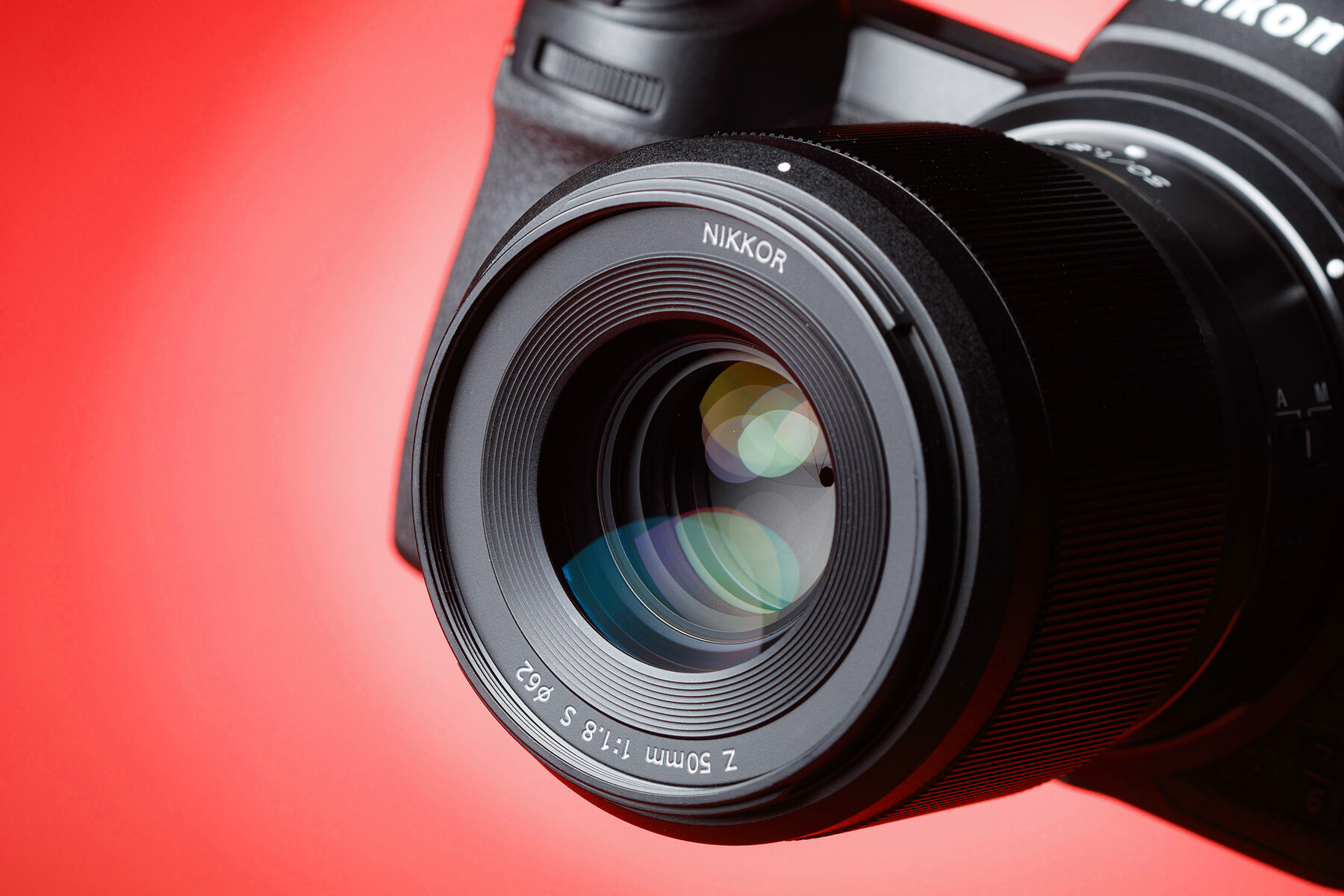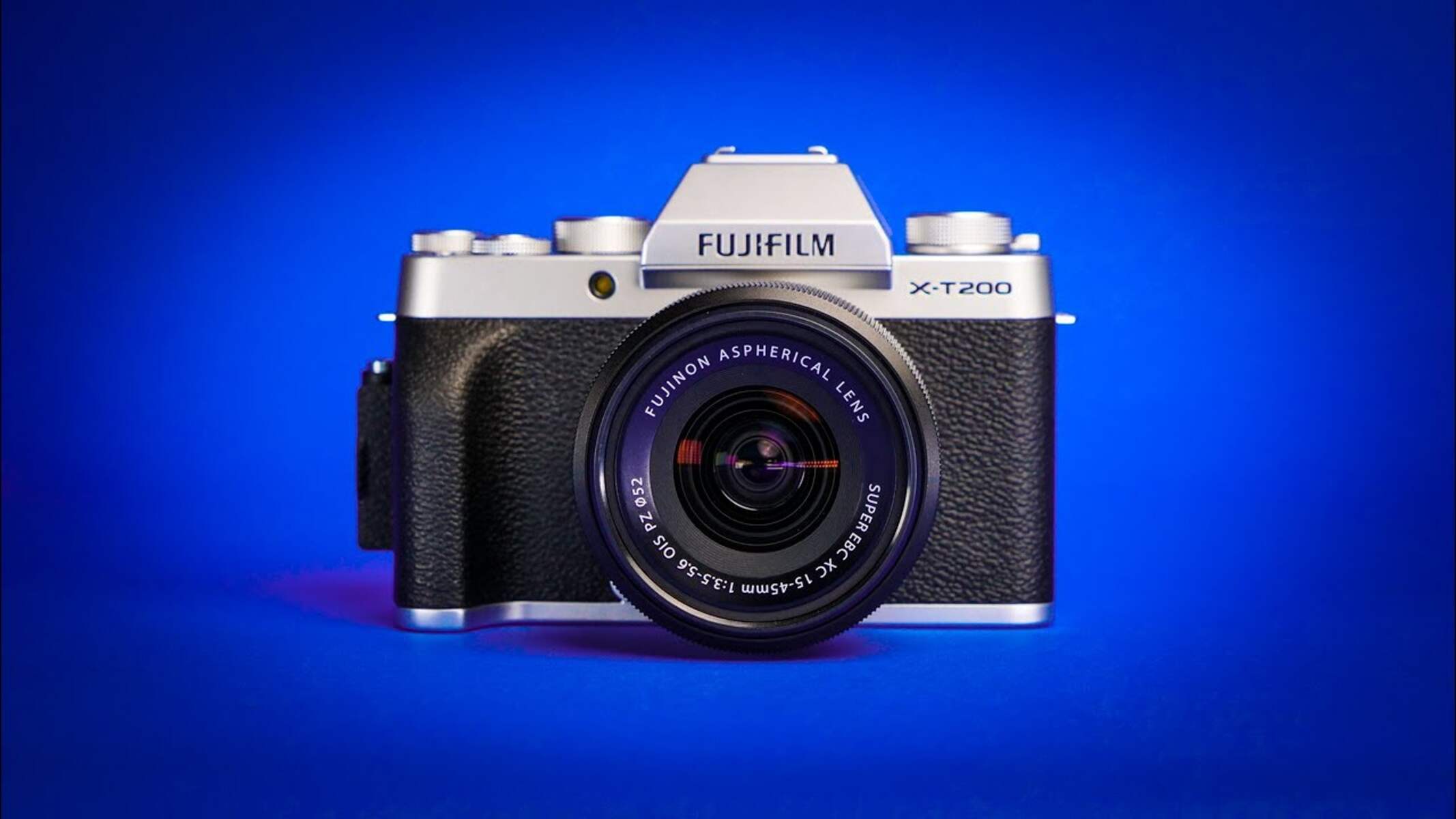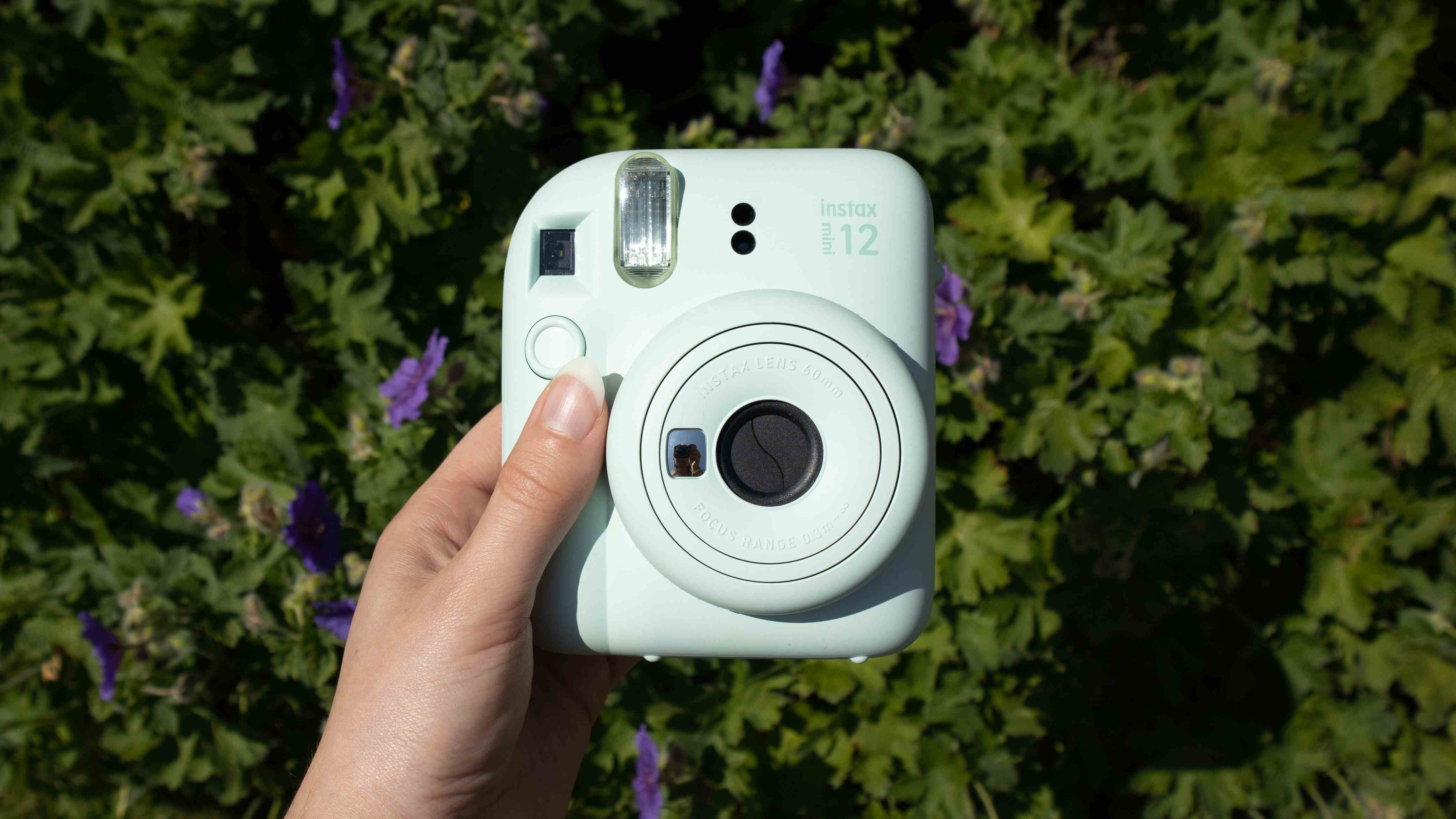Introduction
So, you've got your Fujifilm mirrorless camera all set up, you're eager to capture some stunning photos, but for some reason, it just won't take a picture. Don't worry; you're not alone in this frustration. There are several reasons why your Fujifilm mirrorless camera may be refusing to capture those precious moments. In this guide, we'll explore the common issues and potential solutions to get your camera back in action.
Whether you're a seasoned photographer or just starting with your Fujifilm mirrorless camera, encountering technical difficulties can be frustrating. However, understanding the possible reasons behind the camera's reluctance to take a picture can help you troubleshoot the issue effectively. From battery concerns to firmware updates, we'll delve into the various factors that could be hindering your camera's performance. By the end of this guide, you'll have a clearer understanding of how to address these issues and get back to capturing the world through your lens.
Let's dive into the potential causes and solutions for your Fujifilm mirrorless camera's refusal to take a picture.
Check the Battery
One of the most common reasons why your Fujifilm mirrorless camera may not be taking pictures is a depleted or improperly inserted battery. Before diving into more complex troubleshooting, it’s crucial to ensure that the battery is sufficiently charged and correctly installed.
Begin by turning off the camera and removing the battery. Inspect the battery contacts for any signs of dirt, corrosion, or damage. If necessary, gently clean the contacts with a soft, dry cloth to ensure a secure connection. Next, recharge the battery using the appropriate charger and verify that it reaches a full charge. If you have a spare battery, consider swapping it in to determine if the issue persists. This simple step can help rule out battery-related issues and pinpoint the root cause of the problem.
Additionally, check that the battery is securely inserted into the camera. Even a slightly loose connection can disrupt the power supply and prevent the camera from functioning properly. Ensure that the battery is properly aligned and firmly seated in its compartment, and listen for a distinct click to confirm that it is securely in place.
If the battery appears to be in good condition and fully charged, but the camera still refuses to take a picture, consider testing it in a different camera body if available. This can help determine if the issue lies with the battery or the camera itself. By systematically assessing the battery and its connections, you can eliminate potential power-related issues and focus on other troubleshooting steps to address the camera’s performance.
Memory Card Issues
Another common culprit behind a Fujifilm mirrorless camera’s refusal to take a picture is related to issues with the memory card. A malfunctioning or improperly formatted memory card can disrupt the camera’s ability to store images and may result in operational issues.
Begin by removing the memory card from the camera and inspecting it for any visible damage, such as cracks, bends, or corrosion on the contacts. If the card appears physically damaged, refrain from using it further to prevent potential data loss or damage to the camera’s memory card slot. In such cases, consider replacing the memory card with a new one that meets the camera’s specifications.
If the memory card seems undamaged, verify that it is compatible with your Fujifilm mirrorless camera. Consult the camera’s manual or the manufacturer’s website to ensure that the memory card type and capacity are supported. Using an incompatible memory card can lead to errors and hinder the camera’s performance.
Additionally, formatting the memory card within the camera can resolve certain compatibility and file system issues. However, be cautious when formatting, as this process erases all data on the card. If possible, back up any important files before proceeding. To format the memory card, access the camera’s menu and navigate to the memory card settings. Select the format option and follow the on-screen prompts to initiate the formatting process.
Furthermore, if you frequently transfer images from the memory card to a computer, ensure that the card is safely ejected from the computer after each use. Improperly removing the card from a computer or card reader can lead to file system errors that may impact the camera’s performance.
By addressing potential memory card issues, such as compatibility, physical damage, and file system errors, you can eliminate these factors as the cause of your camera’s inability to capture images. Following these steps can help restore the functionality of your Fujifilm mirrorless camera and ensure seamless photo-taking experiences.
Lens Connection
The connection between the lens and the camera body plays a critical role in the camera’s ability to capture images. A loose or faulty connection can lead to communication errors and hinder the camera’s performance. If your Fujifilm mirrorless camera is not taking pictures, it’s essential to examine the lens connection as part of the troubleshooting process.
Start by removing the lens from the camera body and inspecting the lens mount and contacts for any debris, damage, or irregularities. Use a clean, dry cloth or a specialized lens cleaning tool to gently wipe the contacts and ensure that they are free from dirt, dust, or residue. Similarly, examine the camera’s lens mount for any foreign objects or obstructions that may impede a secure connection.
Once the contacts and mounts are clean, carefully reattach the lens to the camera body, ensuring that it clicks into place securely. Listen for the audible click that indicates the lens is properly mounted. If the lens features a locking mechanism, engage it according to the manufacturer’s instructions to secure the connection further.
If you have an alternative lens that is compatible with your Fujifilm mirrorless camera, consider testing the camera with the alternate lens to determine if the issue is specific to the original lens. This step can help isolate whether the problem lies with the lens or the camera body, guiding your troubleshooting efforts effectively.
Furthermore, if your lens includes electronic contacts, inspect them for signs of damage or wear. Even minor damage to these contacts can disrupt communication between the lens and the camera, leading to operational issues. If you notice any damage, consider consulting a professional technician for assessment and potential repair.
By ensuring a secure and clean connection between the lens and the camera body, you can eliminate potential communication errors and mechanical issues that may be preventing your Fujifilm mirrorless camera from capturing images. Addressing the lens connection as part of your troubleshooting process can help restore the camera’s functionality and enable you to resume your photography endeavors with confidence.
Camera Settings
When your Fujifilm mirrorless camera refuses to capture images, it’s crucial to review and adjust the camera settings to ensure they are configured optimally. Incorrect settings or inadvertent adjustments can impact the camera’s functionality and lead to unexpected operational issues.
Begin by checking the shooting mode selected on the camera. Depending on the shooting conditions and your preferences, the camera mode may affect its ability to capture images. Ensure that the camera is not set to a mode that inhibits picture-taking, such as a specific scene mode or a custom setting that restricts certain functions.
Next, review the autofocus settings to confirm that the camera can acquire focus accurately. If the autofocus mode is inadvertently set to manual focus or a narrow focus area, it may prevent the camera from capturing images as expected. Adjust the autofocus settings to suit your shooting needs and verify that the focus area and mode are appropriate for the intended subject.
Examine the exposure settings, including the aperture, shutter speed, and ISO, to ensure that they align with the desired photographic outcome. Incorrect exposure settings can impact the camera’s ability to capture images effectively, resulting in underexposed or overexposed photos. Reset the exposure settings to default values or adjust them based on the shooting conditions to optimize image capture.
Additionally, review the image quality and file format settings to ensure that they are suitable for your intended use. If the camera is configured to save images in a format that is incompatible with your viewing or editing software, it may appear as if the camera is not taking pictures. Adjust the image quality and file format settings to align with your preferences and workflow requirements.
Lastly, consider resetting the camera to its factory default settings if you suspect that inadvertent adjustments have led to operational issues. This can help restore the camera to a known state and eliminate any unintended configurations that may be hindering its performance.
By reviewing and adjusting the camera settings, you can address potential configuration-related issues that may be preventing your Fujifilm mirrorless camera from capturing images. Taking a systematic approach to evaluating the camera settings can help identify and resolve any setting-related obstacles, allowing you to resume photography with confidence and clarity.
Firmware Update
Keeping your Fujifilm mirrorless camera’s firmware up to date is essential for ensuring optimal performance and addressing potential software-related issues that may affect its ability to capture images. Firmware updates often include bug fixes, feature enhancements, and compatibility improvements that can resolve operational issues and enhance the camera’s overall functionality.
Before proceeding with a firmware update, it’s crucial to verify the current firmware version installed on your camera. This information is typically available in the camera’s menu or settings. Once you have identified the current firmware version, visit the official Fujifilm website or use the manufacturer’s designated software to check for available updates for your camera model.
If a firmware update is available, carefully review the release notes and instructions provided by Fujifilm to understand the improvements and fixes included in the update. Additionally, ensure that the update is compatible with your specific camera model and that you have a reliable power source and stable internet connection for the update process.
Follow the step-by-step instructions provided by Fujifilm to download and install the firmware update onto your camera. This typically involves transferring the firmware file to a formatted memory card and initiating the update process through the camera’s menu system. During the update, it’s crucial to avoid turning off the camera or removing the memory card to prevent potential data corruption or software errors.
Once the firmware update is complete, restart the camera and verify that the update was successful by checking the updated firmware version in the camera’s settings. Test the camera’s functionality by attempting to capture images to ensure that the update has resolved any previous issues.
By staying current with firmware updates, you can leverage the latest improvements and fixes provided by Fujifilm, addressing potential software-related obstacles that may have been preventing your mirrorless camera from capturing images. Regularly checking for and applying firmware updates is an effective way to maintain the performance and reliability of your camera, ensuring a seamless photography experience.
Troubleshooting with Fujifilm Customer Support
If you’ve exhausted the aforementioned troubleshooting steps and your Fujifilm mirrorless camera still refuses to capture images, seeking assistance from Fujifilm’s customer support team can provide valuable insights and potential solutions to address the issue.
Before reaching out to customer support, ensure that you have detailed information about the problem you’re experiencing, including any error messages, specific operational issues, and the steps you’ve already taken to troubleshoot the problem. This information can help the support team understand the nature of the issue and provide targeted assistance.
Contact Fujifilm’s customer support through their designated channels, which may include phone support, email support, or live chat, depending on your region and the available support options. Be prepared to provide the camera’s model and serial number, as well as your contact information, to facilitate the troubleshooting process.
When communicating with customer support, clearly and concisely describe the issue you’re encountering, along with the troubleshooting steps you’ve already performed. The support team may guide you through additional diagnostic procedures or provide specific instructions for resolving the issue based on their expertise and knowledge of Fujifilm cameras.
If the issue appears to be hardware-related or requires in-depth technical assessment, the customer support team may recommend sending the camera to an authorized service center for further evaluation and potential repair. They can provide guidance on the necessary procedures for initiating a service request and facilitate the handling of your camera for inspection and servicing.
Furthermore, customer support representatives may be able to provide information about any known issues or recalls related to your camera model, as well as offer recommendations for optimizing its performance based on your specific usage scenarios.
Engaging with Fujifilm’s customer support team can offer a personalized and expert-driven approach to troubleshooting and resolving the issues preventing your mirrorless camera from capturing images. By leveraging their knowledge and resources, you can gain valuable insights and assistance tailored to your camera’s unique circumstances, ultimately restoring its functionality and your ability to capture stunning photographs.

























